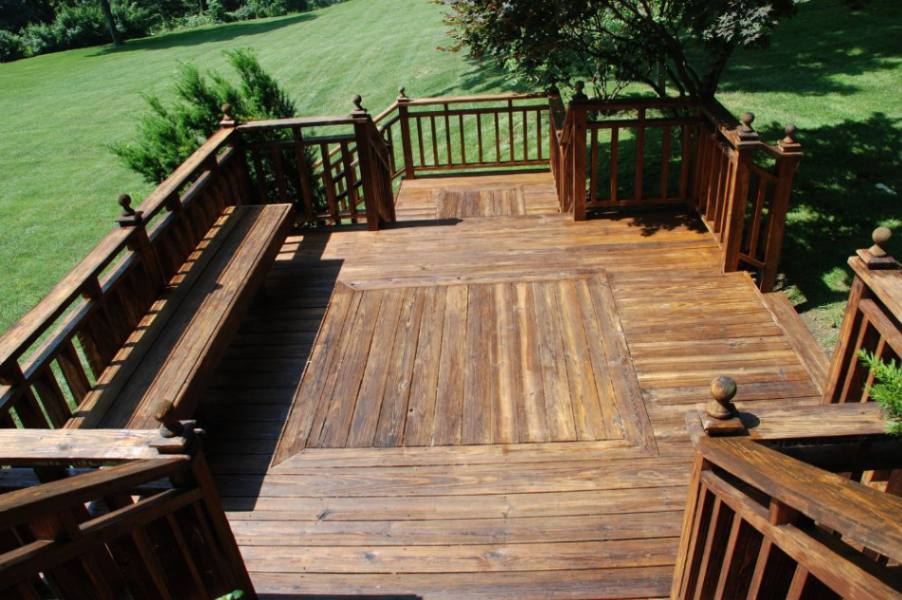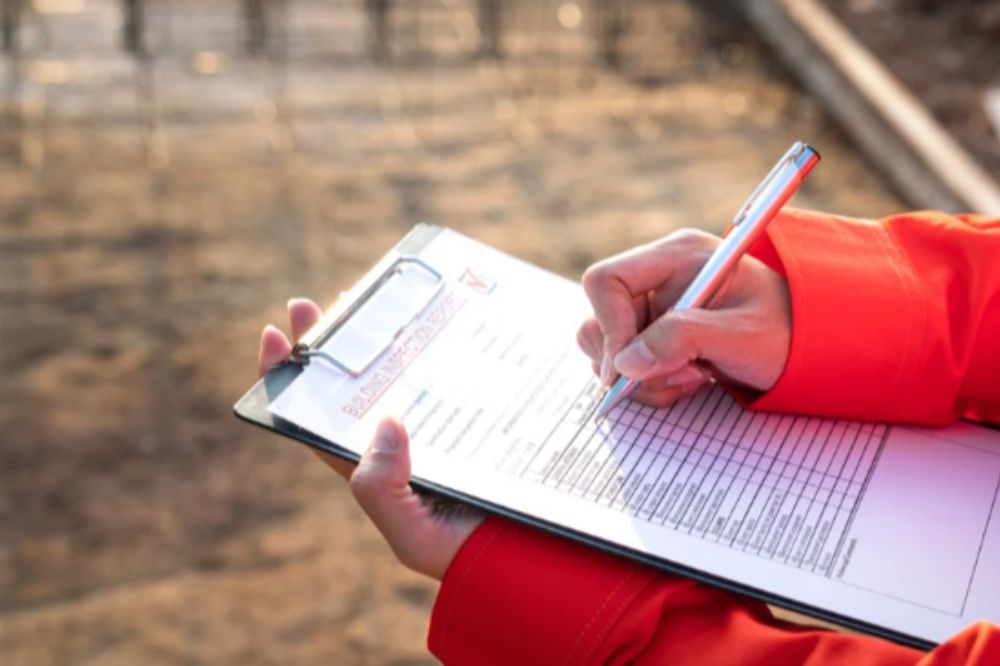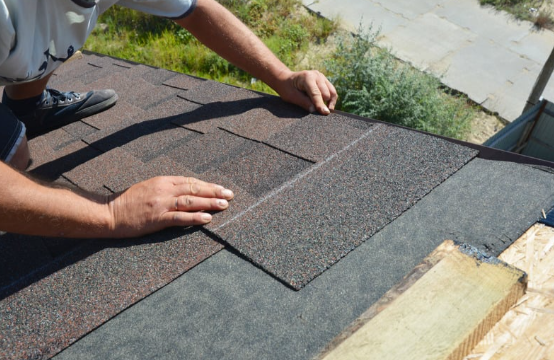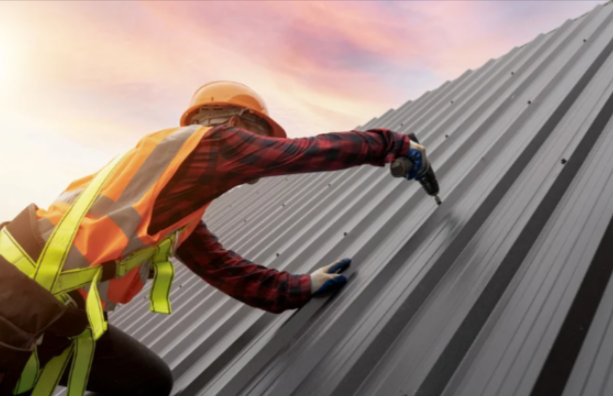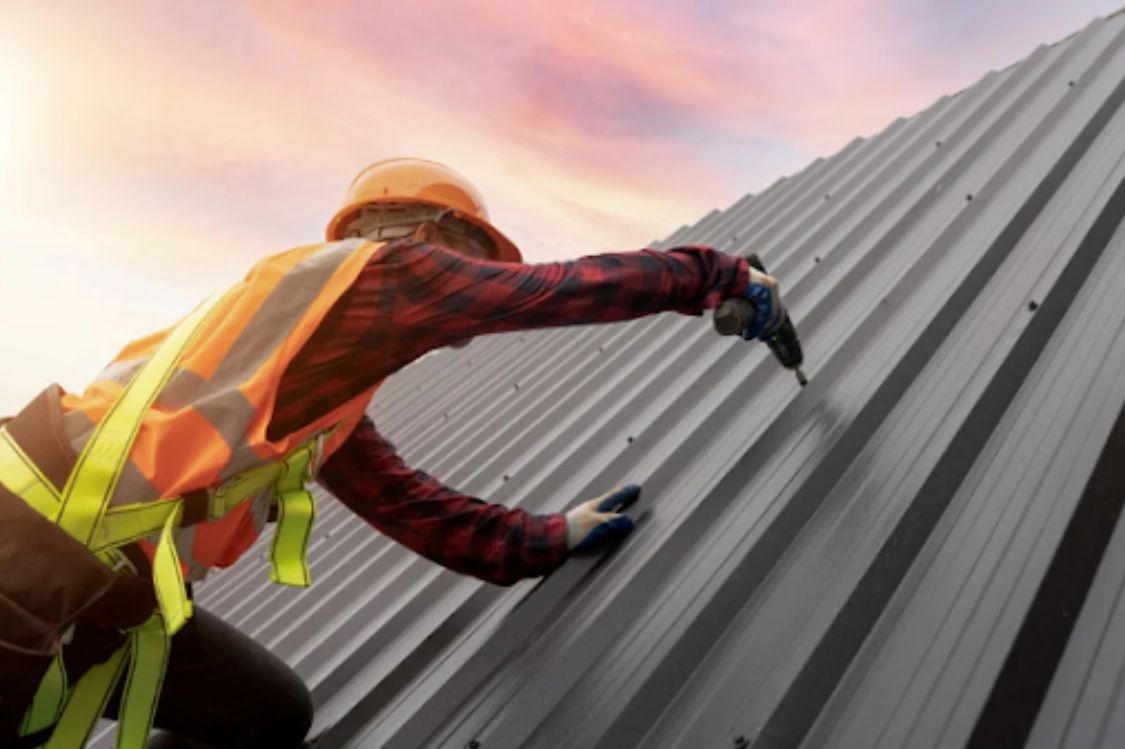Roofing is an integral aspect of any building, serving as the first line of defense against the elements. Understanding roofing terminology is crucial for homeowners, contractors, and anyone involved in the construction or maintenance of buildings.
In this guide, we will explore essential roofing terms to know, accompanied by a comprehensive roofing terms diagram, shedding light on the importance of mastering these roofing terminologies to ensure the longevity and structural integrity of your property. Whether you’re embarking on a roofing project or simply want to be well-informed about your roof’s condition, this knowledge is a valuable asset in the world of construction and property management.
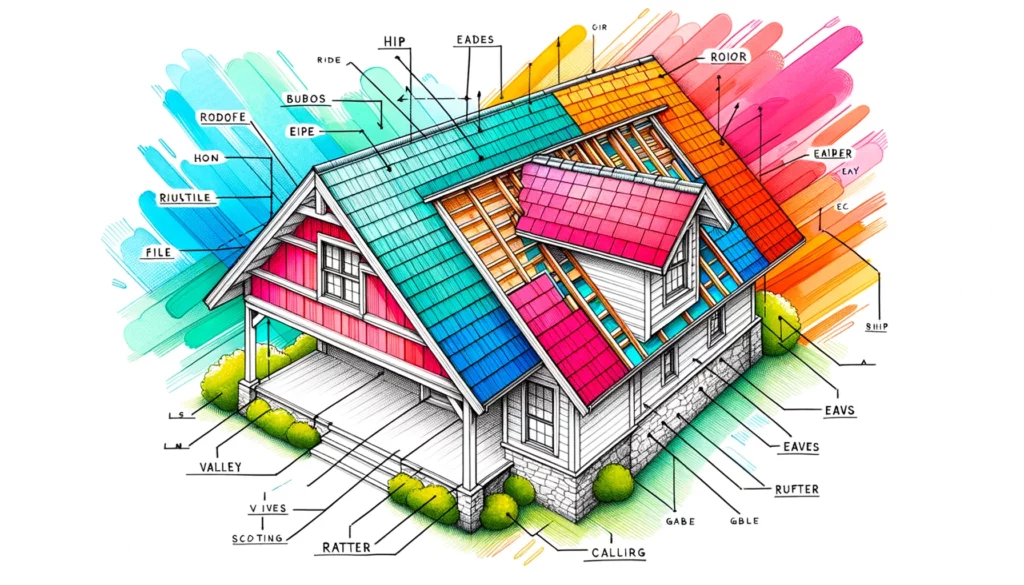
Top 50+ Roofing Terms To Know
Roofing Materials & Components
- Asphalt Roof Covering: A common roofing material made of asphalt, fiberglass, and mineral granules. It’s durable and comes in various colors and styles.
- Ballast: An anchoring material, like gravel or stones, used on some flat roofs to prevent wind uplift or shield the roof from UV rays.
- Batten: A narrow strip of wood or metal on a roof that provides a base for attaching roofing material. It’s like a skeletal structure over which the skin (or shingles) is laid.
- Bitumen: A black viscous mixture of hydrocarbons that’s used for roofing and road surfaces. It’s the sticky stuff that helps hold things together!
- Built-Up Roofing (BUR): Made up of alternating layers of reinforcing fabric and bitumen, it’s finished with a top layer of aggregate like stone. Often used on flat roofs.
- EPDM: Stands for Ethylene Propylene Diene Monomer. It’s a rubber roofing material commonly used on commercial roofing systems.
- Felt Underlayment: A sheet made of fibrous materials, which is installed between the roof deck and the shingles.
- Granules: Tiny bits of ceramic-coated minerals that are embedded into the surface of shingles. They protect against UV and give color.
- Laminated Shingles: Multi-layered shingles that give a textured appearance. They’re often used to replicate the look of wood or slate shingles.
- Modified Bitumen: A type of roofing system made from asphalt that has been modified with polymers to increase its performance attributes.
- Plywood: A type of board made by gluing together several thin layers of wood. It’s a common material used for roof decking.
- PVC Roofing: Stands for Polyvinyl Chloride. A single-ply roofing solution used on commercial or industrial roofs. Durable and long-lasting.
- Roll Roofing: A type of roofing product that comes in rolls, often used on slopes and other areas not suited for traditional shingles.
- TPO Roofing: Stands for Thermoplastic Olefin. A single-ply roofing system often used on commercial buildings due to its durability and energy efficiency.
Roofing Installation & Techniques
- Blind-Nailing: The use of nails that are not visible once the roofing material is finished. It gives a clean, uninterrupted look.
- Courses: Horizontal rows of shingles or tiles. Just as sentences form paragraphs, courses layer up to form roofs.
- Drip Edge: Metal flashing that’s installed at the edges of the roof to direct water away from the fascia and into the gutters.
- Flashing: Materials, usually metal, used to waterproof and direct water away from intersections or projections on the roof, such as chimneys or vents.
- Flashing Cement: A special adhesive used to seal and secure flashing. It’s one of the unsung heroes in ensuring roofs don’t leak.
- Interlocking Shingles: Individual shingles that mechanically fasten to each other to provide enhanced wind resistance.
- Overlay: Installing a new layer of shingles directly over existing ones. It’s a way to reroof without removing the old roof.
- Racking: A shingle installation method where shingles are laid vertically up the roof rather than across and up.
- Self-Sealing Strip: A heat-activated adhesive that bonds shingles together once they’re exposed to the heat of the sun after installation.
- Step Flashing: Individual pieces of material used to flash walls, around chimneys, and dormers. It’s bent in the middle and integrated into the siding on one side and lays on top of the shingles on the other.
- Underlayment: A barrier or cushion, often made of felt or synthetic material, that’s installed on a roof deck before shingles are added.
- Valley Flashing: Metal that sits in valleys to protect from water intrusion.
- Woven Valley: A method of valley construction in which shingles from both sides of the valley extend across the valley and are woven together.
Roof Parts & Features
- Attic: The space between the ceiling of the top floor and the roof. It’s crucial for ventilation and often used for storage.
- Butt Edge: The bottom edge of a shingle.
- Chimney: A structure allowing smoke from a fireplace to vent out through the roof. It’s crucial to ensure its joints with the roof are waterproof.
- Collar Beam (Collar Tie): Located between the rafters, it prevents the roof from spreading. It ensures your roof remains upright and doesn’t push the walls outwards.
- Cricket: A peaked construction ensuring water flows away from chimneys, skylights, or other roof projections.
- Deck: The substrate over supportive framing to which roofing material is applied. It’s essentially the foundation of your roof.
- Dormer: A small structure projecting from a sloped roof, usually with a window. Think of it like a little room or window poking out from the main roof.
- Eave: The edge of the roof that hangs over the exterior walls. It’s the overhanging margin of your roof.
- Fascia: The board running along the roof’s lower edge, typically covering the ends of rafters. It’s often where gutters are attached.
- Gable: The triangular portion of the wall between the edges of intersecting roof pitches. It’s the classic peaked roof style.
- Hip: The external angle formed by the meeting of two sloping sides of a roof.
- Hip & Ridge Shingles: Specialized shingles that are designed for the hip and ridge lines of a roof. They provide both aesthetics and protection at these critical areas of a roof.
- Joist: Horizontal structures supporting the deck. They’re like the backbone of the roof.
- Louvers: Slatted devices installed in a gable or soffit to allow the movement of air.
Roof Protection & Maintenance
- Counterflashing: Metal or other material used to cover and protect some types of flashing and prevent water entry.
- Dew Point: The temperature at which air becomes saturated with moisture and produces condensation. Important to consider when designing a roofing system for certain climates.
- Fire Rating: A system classifying the resistance of roofing products to fire originating from sources outside the building. Class A is the highest.
- Ice Dam: A ridge of ice that forms at the edge of a roof and prevents melting snow (water) from draining off the roof.
- Roof Louver: A type of vent installed in the face of the roof to allow the passage of air.
- Snow Guards: Devices or systems that prevent snow and ice from dropping off one area of a sloped roof to a lower area.
- Sump: A pit or reservoir providing drainage for water, typically found on flat or low-sloped roofs.
- Telegraphing: When shingles are improperly installed over an irregular surface, the structure beneath can sometimes be seen in the shingle’s surface.
- Vent Pipe: A pipe that allows gas or air to escape, often from plumbing fixtures or appliances.
- Water Shield: A self-adhesive waterproofing membrane that’s used to protect against ice dams and wind-driven rain.
- Zinc-Coated Shingles: Shingles that have a layer of zinc coating to prevent moss, algae, and fungal growth, enhancing the lifespan of the roof.
Roof Design & Aesthetics
- Cornice: The portion of the roof projecting out from the side walls of the house. It’s both decorative and functional, keeping rainwater off the walls.
- Dutch Gable Roof: A blend of a gable and hip roof where a hip roof is topped by a gable at the end or vice versa.
- Mansard Roof: A type of roof with two slopes on all four sides — the lower slope is steep and almost vertical, while the upper slope is much less steep.
- Monopitch Roof: A roof with only one slope or pitch. It’s often used for additions or to cover a specific area of a house.
- Rake: The inclined edge of a roof over a wall.
Roof Additions & Structures
- Chimney: A structure allowing smoke from a fireplace to vent out through the roof. It’s crucial to ensure its joints with the roof are waterproof.
- Dormer: A small structure projecting from a sloped roof, usually with a window. Think of it like a little room or window poking out from the main roof.
- Penetration: Anything that pierces through the roof’s surface, such as a chimney, vent, or stack.
Technical Terms & Tools
- Flange: A projecting flat rim, collar, or rib on an object, serving to strengthen or attach or (on a wheel) to maintain position on a rail.
- Roof Bracket: Tools used to create a flat surface to stand on when roofing. They’re often seen on steep slope roofs.
- Xactimate: A popular estimating software used by roofers and insurance adjusters to determine the cost of a roofing job based on local pricing.
Miscellaneous Terms
- Cant Strip: A triangular-shaped piece of lumber used at the junction of a flat deck and a vertical surface to prevent bending of the roofing material.
- Lookout: Wooden or metal brackets that support the overhang of an eave.
Roof Ventilation & Airflow
- Attic: The space between the ceiling of the top floor and the roof. It’s crucial for ventilation and often used for storage.
- Roof Vent: An object placed on the roof that allows the escape of warm air from the attic or rafter space.
- Soffit: The material that covers the underside of roof overhangs or eaves. It helps ventilate the attic and provides a finished look.
- Turbine Vent: A round vent with slats. When the wind blows against the turbine, it spins, drawing air from the attic.
- Louvers: Slatted devices installed in a gable or soffit to allow the movement of air.
Roof Support & Structural Components
- Collar Beam (Collar Tie): Located between the rafters, it prevents the roof from spreading. It ensures your roof remains upright and doesn’t push the walls outwards.
- Joist: Horizontal structures supporting the deck. They’re like the backbone of the roof.
- Rafter: The structural elements, like beams, that support the deck. They’re the main framework that holds up the entire roof.
- Truss: A framework, usually made of wood or steel, that supports a roof.
Water & Moisture Management
- Crickets: A peaked construction ensuring water flows away from chimneys, skylights, or other roof projections.
- Gutter Apron: A piece of flashing material that directs water into the gutter.
- Scupper: An opening in a roof’s edge, parapet wall, or sidewall for water drainage.
- Weep Holes: Small holes that allow water to drain from inside the building to the exterior.
- Zinc Strips: Metal strips installed at roof peaks to reduce the growth of algae and mold.
Roof Terminology & Definitions
- Roof Pitch: The angle of a roof’s slope, typically described as “X in 12” (for instance, “4 in 12”), indicating the rise in height for every 12 horizontal inches.
- Square: Roofing lingo for a 100 square foot area. It’s a standardized measure, like a “dozen” for eggs.
Protection & Safety Measures
- Fire Rating: A system classifying the resistance of roofing products to fire originating from sources outside the building. Class A is the highest.
- Ice Dam: A ridge of ice that forms at the edge of a roof and prevents melting snow (water) from draining off the roof.
Roof Enhancements & Decorative Features
- Cornice: The portion of the roof projecting out from the side walls of the house. It’s both decorative and functional, keeping rainwater off the walls.
- Hip & Ridge Shingles: Specialized shingles that are designed for the hip and ridge lines of a roof. They provide both aesthetics and protection at these critical areas of a roof.
Technical & Miscellaneous
- UL Label: A label displaying that products and materials meet safety standards set by Underwriters Laboratories.
- Yield: The measure of the coverage of roofing material after its application.

